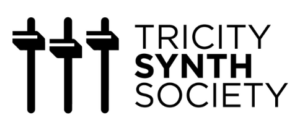Voltage Control Amplifier (VCA)
Your modular systems have two VCA units per system. This means you have 4 separate channels for amplifying incoming audio signals and controlling levels with a control voltage signal (e.g., an envelope coming from your MATHS module into the CV A or CV B inputs).
Level A and Level B (large knobs) control the initial level (or volume) of the amplifier (prior to using a control voltage to modulate the amplification). If you just want to amplify an incoming signal, use the Level knobs (like the volume control on your stereo system).
Outputs A and B can be patched to the FX mixer, an external mixer, and so on.
NOTE: If you have signals patched to both A and B inputs, OUTPUT B will mix both signals together, so you just need to use the B OUT to send audio for both channels. This means that you can use ONE output patch cable (Out B) per module to go to the mixer or FX module. You can also patch the drum machine in (to mix volumes and reduce the number of patch cables going to your mixer or FX modules.
Once your input signal (e.g., IN A) has been patched, you can then add your CV signal (CV A input) to modulate the voltage. Before adding a control voltage to modulate amplification (e.g., using an envelope generated by MATHS, and LFO, or other sources), turn down the small CV A knob (counterclockwise) so the volume output is not too high. Then, turn down the master LEVEL volume and slowly turn up the CV A knob to amplify the modulation signal (or envelope shape).
You can choose to just use the CV to control amplification using the modulation signal (envelope), or use both the LEVEL knob and CV knob together (for different sound/musical purposes).
The small knob at the bottom of each channel section (with the red graph icon) is your RESPONSE control, which sets the response curve or sensitivity of the CV control dial. To lower the response curve, turn the knob to the middle 12:00 or further to the right (full clockwise).
Almost all of our Patch Templates discuss the use of the VCA.















